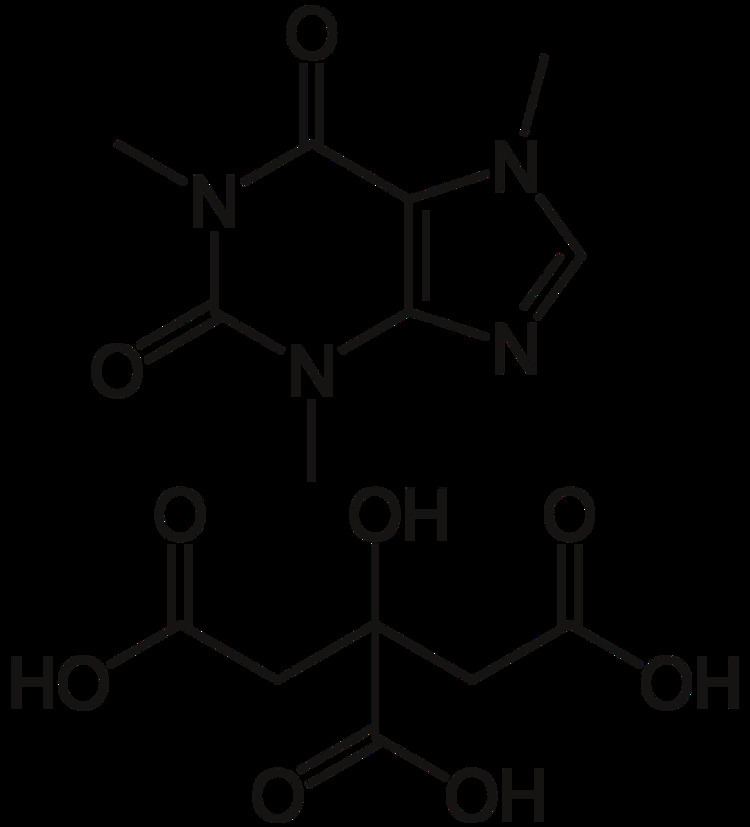Trade names Cafcit, other Routes ofadministration by mouth, i.v. CAS Number 69-22-7 CAS ID 69-22-7 | AHFS/Drugs.com Monograph ATC code N06BC01 (WHO) Molar mass 386.314 g/mol | |
 | ||
Pregnancycategory US: C (Risk not ruled out) | ||
Caffeine citrate, sold under the trade name Cafcit among others, is a medication used to treat a lack of breathing in premature babies. Specifically it is given to babies who are born at less than 35 weeks or weight less than 2 kilograms (4.4 lb) once other causes are ruled out. It is given by mouth or slow injection into a vein.
Contents
Side effects can include problems feeding, increased heart rate, low blood sugar, necrotizing enterocolitis, and kidney problems. Testing blood caffeine levels is occasionally recommended. It is a citrate salt of caffeine. Caffeine citrate is in the xanthine family of medication. It works by stimulating the respiratory centers in the brain.
Caffeine was discovered in 1819. It is on the World Health Organization's List of Essential Medicines, the most effective and safe medicines needed in a health system. In the United Kingdom a 10 mg vial costs 4.90 pounds. The intravenous form may also be taken by mouth.
Medical uses
Caffeine citrate is generally the preferred treatment for apnea of prematurity. It has less side effects as compared to theophylline.
Caffeine citrate functions in much the same capacity as does caffeine, but takes effect more quickly; its speed of dissociation is faster than that of caffeine. Like its sister compound, it can be used to dispel pain from a headache. However, caffeine sodium benzoate is typically only used to treat severe migraines, not the citrate form.
Mechanism
In method of action, the preparation is exactly identical to that of caffeine base as the citrate counter ion dissociates in water. Doses of caffeine citrate, due to the added weight of the citrate moiety, are understandably higher than with caffeine base, i.e., it takes a larger dose to get the same amount of caffeine. The ratio of therapeutic doses of caffeine base to its citrate salt is typically 1:2. Dosing should therefore be clearly distinguished.
Manufacture
The drug is prepared simply by combining anhydrous caffeine with citric acid monohydrate and sodium citrate dihydrate.
